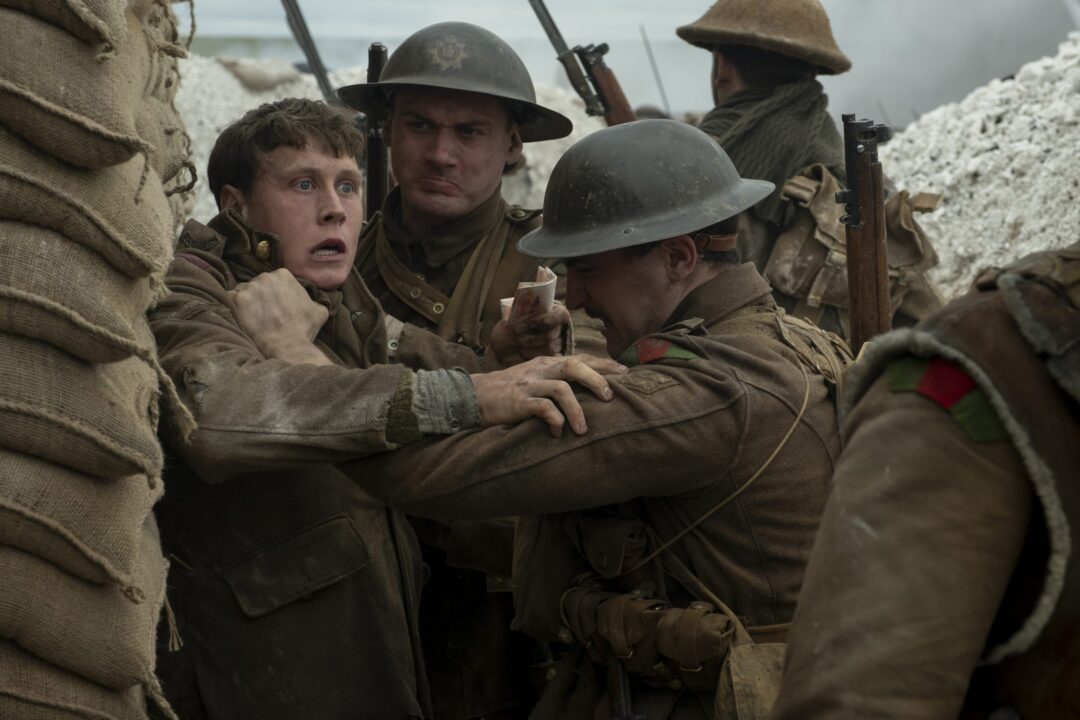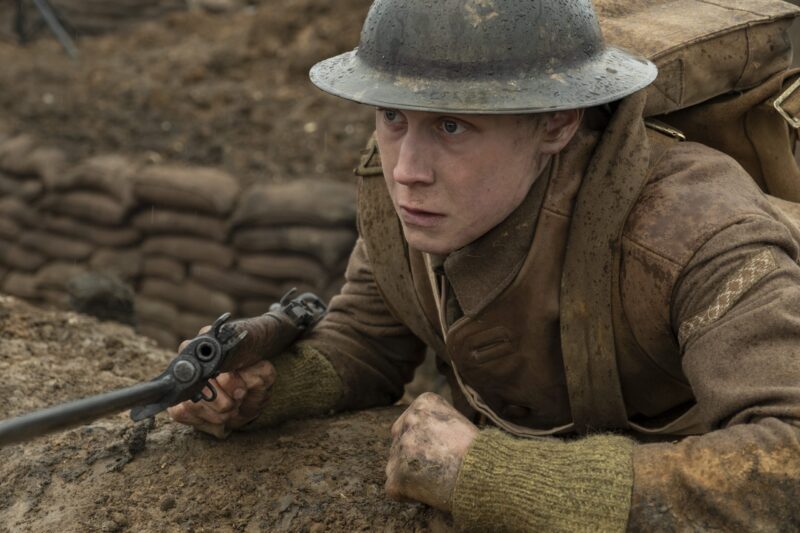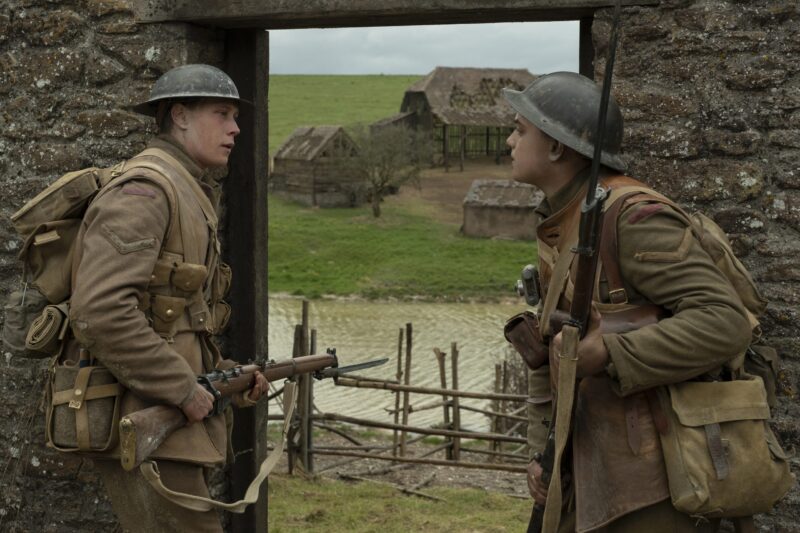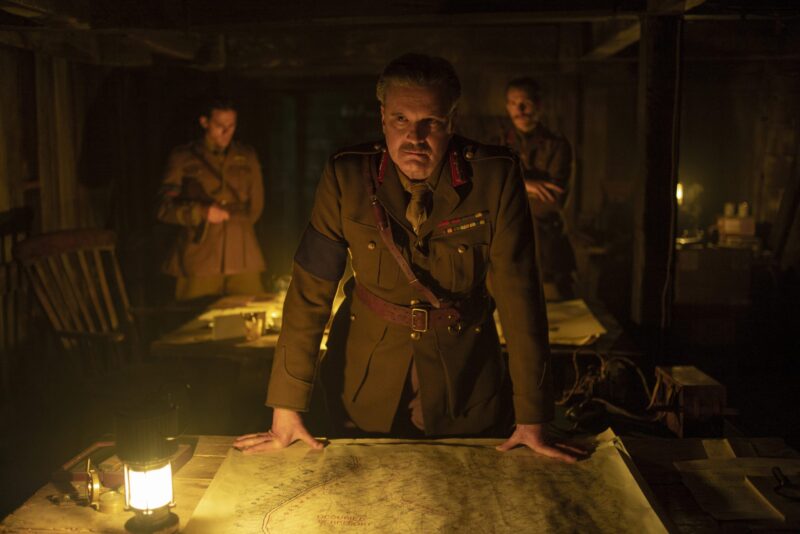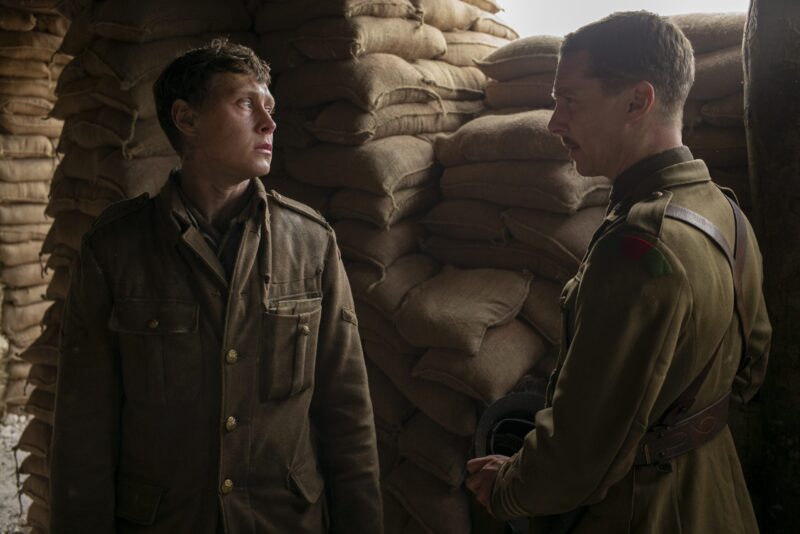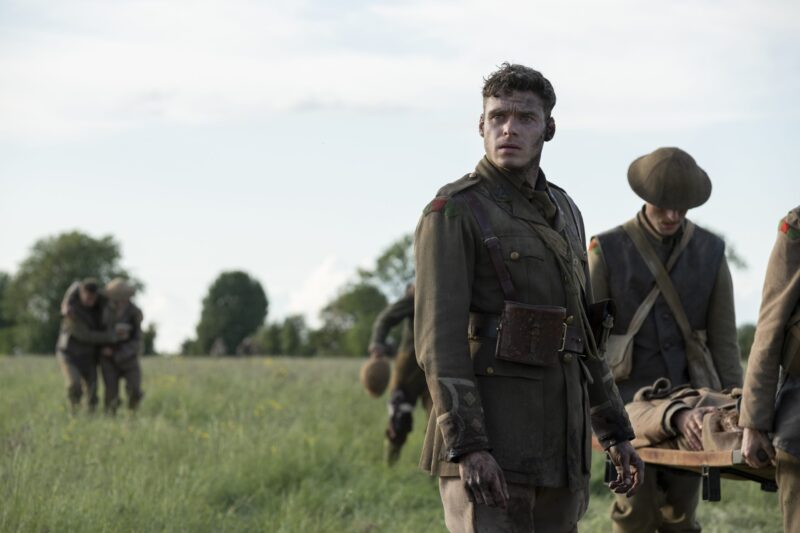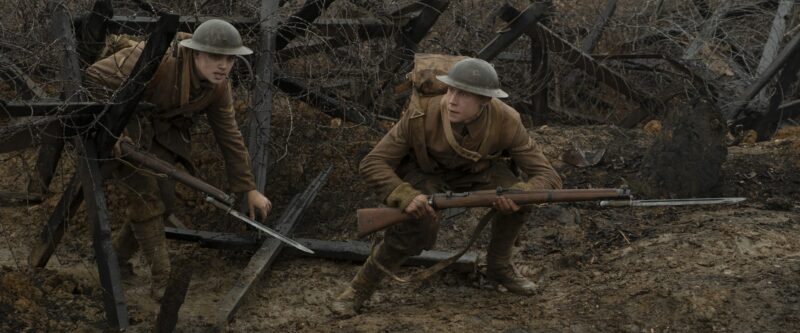April 6, 1917: The two young British corporals Blake (Dean-Charles Chapman) and Schofield (George MacKay) are given the task of warning one of their companies that they are about to attack in the middle of a well-planned German ambush.
The lives of 1,600 young men are at stake if they do not reach Colonel Mackenzie with the message in time.
Time is their worst enemy as they make their way through no man’s land.
Trench war
World War I is not without reason called the trench war. On the great European plains, battalions dug themselves into fortified, narrow trenches while standing against the enemy, trying to win new ground, meter by meter.
The standstill could last for months, delightfully produced in the comedy classic Blackadder Goes Forth.
As we are thrown into history, the war has been going on for three years, and there is a standstill between German and Allied troops in northern France.
Hell down in the narrow, muddy, dirty, smelly trenches is impressively recreated, down to the smallest eerie detail. The film is explicit, raw and undisguised, but never speculative – sometimes it becomes almost uncomfortable to watch.
Corporal Blake has an older brother in the company who is about to fall right into the German trap, but General Erinmore (Colin Firth) assures him that the Germans, strategically, have withdrawn; so that the two almost get freely rented to the village of Écourt.
Whereupon Schofield laconic counters with why in the world they were then asked to bring grenades…
The Great War
World War I (1914-1918) is most often referred to by the British as “the Great War”, a war to which much honor, glory and almost exalted nostalgia is attached.
Mendes has based the script on stories from the war that his grandfather, Alfred Mendes, told him. The story itself is fiction, but the course of events is loosely based on actual experiences my grandfather went through as a young soldier during the war.
This is probably also the core of Mendes’ urge to give Corporal Schofield a heroic role in the middle of the war hell; occasionally on the verge of superhuman.
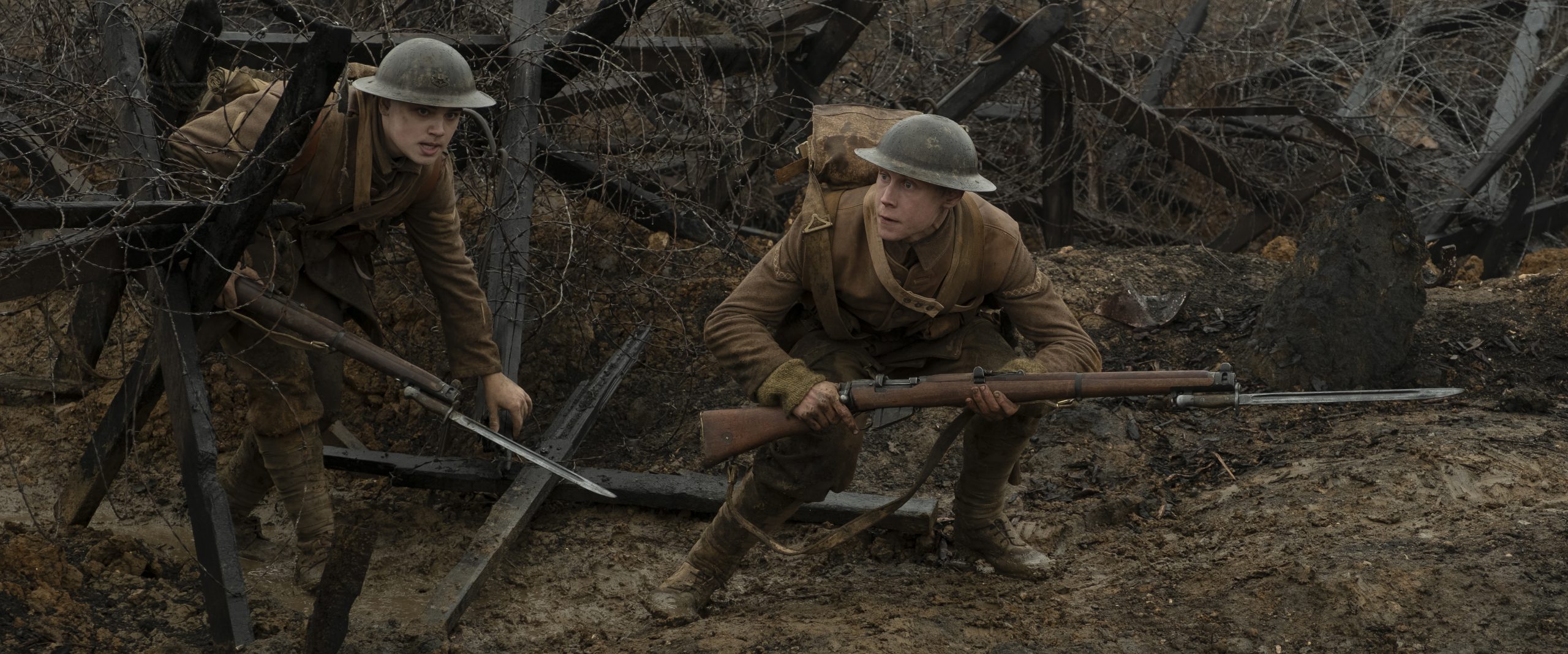
Vandring gjennom Helvete
The two young men’s expedition, and the battle against the clock, becomes a journey through the courtyard of Hell, a downward spiral of violence á la Dante’s Inferno.
It is barren, desolate, gray, cold and muddy in the brutal no man’s land. Both parties have barricaded themselves behind layers upon layers of barbed wire, mines and barriers. Bodies to varying degrees of decay and with torn limbs are strewn – all while the fat rats have a party night.
A dramatic incident means that Schofield must try to complete the mission on his own, exhausted, hungry, wounded and mentally broken down, he advances, fights snipers, German superiors, cold and ignorant officers.
The only glimmer of light, and a hint of hope, throughout the film is as he meets a young French woman who has sought refuge with an orphaned baby. The few minutes of tenderness are a liberating break for Schofield, and us viewers, from the horrors of war.
Photo and editing of another world!
1917 is only the ninth feature film by British director Sam Mendes, who made his big break with American Beauty in 1999. Since then, he has made a name for himself with emotional masterpieces such as Road to Perdition and Revolutionary Road, as well as the last two Bond films Skyfall and Specter – both among the best 007 films.
Certainly not among the world’s most productive directors, but his films are never something to be indifferent to. He has previously portrayed the cruelty of the war in Jarhead, but in 1917 he bases the story on his own relative’s war experiences.
As the two corporals set out on their “impossible” mission, we get an unusually impressive scene through the trenches and no man’s land that appears to have been taken in one shot. 1917 is not the first film to have long shots, including Brian De Palma filming the opening scene in Snake Eyes for 12 consecutive minutes. Here at home, Erik Poppes Utøya on 22 July appears as one continuous shot.
1917 was not shot in one long shot, but it was filmed and cut so that it almost appears as two long, uninterrupted scenes. A technical masterpiece and a photo feat by Roger Deakins that we have hardly seen before. It is an aesthetic pleasure in all its horror.
One thing is that it looks great, but it gives the story an extra intensity and dramaturgical power.
Star cast
Mendes has brought with him most of what can creep in and out of great British actors, in tiny supporting roles. From Colin Firth to Mark Strong, Benedict Cumberbatch and Richard Madden, but 1917 is George MacKay’s film.
MacKay (best known for his role as the son of Viggo Mortensen in Captain Fantastic) makes a feat as the complex corporal sent out on the impossible suicide mission.
He is in every single scene, and carries the dramatic story on his weaving shoulders. The somewhat introverted young man is really fed up with the whole war but is just as happy to be away from home. He definitely does not see himself as a hero, but selflessly he goes forward, exhausted and hurt, despite the fact that it looks completely hopeless. There are never signs of overplay or anything theatrical about his solid role performance.
Not as distant and “cool” as the unique Dunkirk, 1917 is unfortunately also a bit too focused on portraying Corporal Schofield as a hero with a penchant for overly clear symbolism, the plot itself is not very original either; but 1917 is a fantastic film and a technically, visually beautiful-ugly feat.
5 rock solid stars for a movie you will soon forget – it will probably sit, in a slightly painful way, in the system for a few days. Highly recommended!

Facts:
- Blu-ray
- Release: May 4, 2020
- Directed by Sam Mendes
- With: George MacKay, Dean-Charles Chapman, Daniel Mays, Claire Duburcq, Colin Firth, Mark Strong, Benedict Cumberbatch, Richard Madden
- Genre: War
- Country: UK
- Year: 2019
- Time: 2:00 p.m.
- Rating: 5
